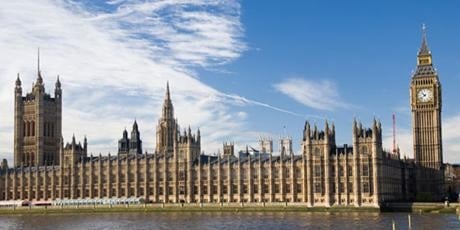In a report published by the Joint Committee on the Palace of Westminster, it has concluded that the Palace of Westminster ‘faces an impending crisis which we cannot responsibly ignore’. There is a substantial and growing risk of either a single, catastrophic event, such as a major fire, or a succession of incremental failures in essential systems which would lead to Parliament no longer being able to occupy the Palace.
The Joint Committee of MPs and Peers has also concluded that the current ‘patch and mend’ approach to maintaining the Palace is no longer sustainable and recommends that a major programme of works is now essential, and that Parliament must enable the next stage of urgent and vital preparatory work to go ahead so as to minimise costs and reduce further risks.
The Joint Committee, co-chaired by Chris Grayling MP and Baroness Stowell of Beeston, was appointed in July 2015 to consider a range of options and make recommendations on the best way to protect the Palace and to maintain it as a working parliament.
The Palace has not had a major renovation of its mechanical and electrical services since it was built in the mid-1800s, leading to a substantial and growing risk that a catastrophic event such as a major fire, or incremental system failures, will lead to the building being uninhabitable.
The Committee concluded that the lowest risk, most cost-effective and quickest option to undertake these essential works would be for all MPs, Peers, and staff to move out of the Palace temporarily in one single phase. However, the Committee recommends that, first, Parliament should establish a Delivery Authority to develop a full business case and prepare a final budget for Parliament’s approval. The next, detailed preparatory stage will ensure that taxpayers, as well as Government and Parliament, can be confident that the final proposal is the most cost-effective and will be deliverable before the final go-ahead is given for the works to start during the 2020 Parliament.
The Committee’s main conclusions and recommendations are:
- That a clear decision on the next steps is needed now. The report contains a draft Motion recommending that a Sponsor Board and Delivery Authority be established as soon as possible. Once established, the Delivery Authority will produce the detailed business case which will then allow the final budgets to be set.
- Subject to further feasibility work, value-for-money assessments and validation by the Sponsor Board and Delivery Authority, the Committee concluded that the best decant solution for the House of Commons would be a solution based around Richmond House and the House of Commons’ Northern Estate. The best decant solution for the House of Lords would be the establishment of a temporary Chamber and supporting offices in the Queen Elizabeth II Conference Centre.
- The programme will present significant opportunities to engage with small and medium-sized enterprises throughout the United Kingdom, especially those with specialist skills in the heritage and conservation sector. The Sponsor Board and Delivery Authority should consider how apprenticeships and other training schemes could be delivered as part of the Restoration and Renewal Programme, in order to increase capacity in this area and to provide a lasting legacy of skills.
Baroness Stowell of Beeston, Co-Chairman of the Committee, said: “We must not spend a penny more than is absolutely necessary, but this is now an increasingly urgent problem. We can’t put off the decision to act any longer if we are to protect one of the most important and iconic parts of our national heritage. The next phase of work, to be conducted by the Delivery Authority, will be vital in ensuring that Parliament has a fully costed and tested plan for conducting the work, before being asked to give the final go-ahead for the works to start.”
Committee member and Committee spokesperson, Chris Bryant MP, said: “All the evidence points to having to move out of the whole Palace simultaneously. That is the lowest risk, most cost-effective and quickest option.”


